Kwikset Halo Touch Review and Pricing 2025
It’s finally here — a Wi-Fi-ready smart lock you can open with your finger. But is it worth the $240 price tag? It’s time to find out.
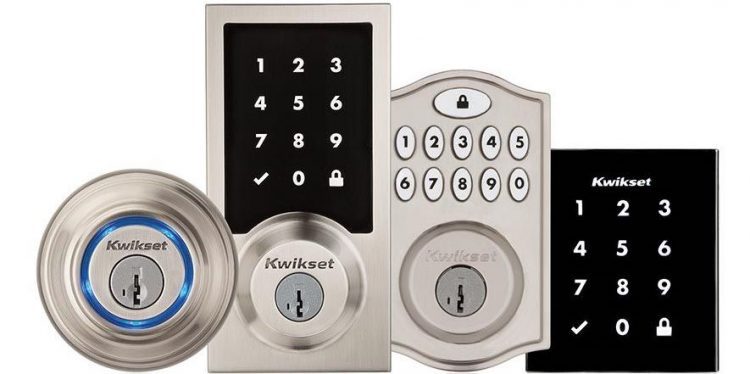
SafeHome.org may receive compensation from some providers listed on this page. Learn More
We may receive compensation from some providers listed on this page. Learn More
It’s finally here — a Wi-Fi-ready smart lock you can open with your finger. But is it worth the $240 price tag? It’s time to find out.

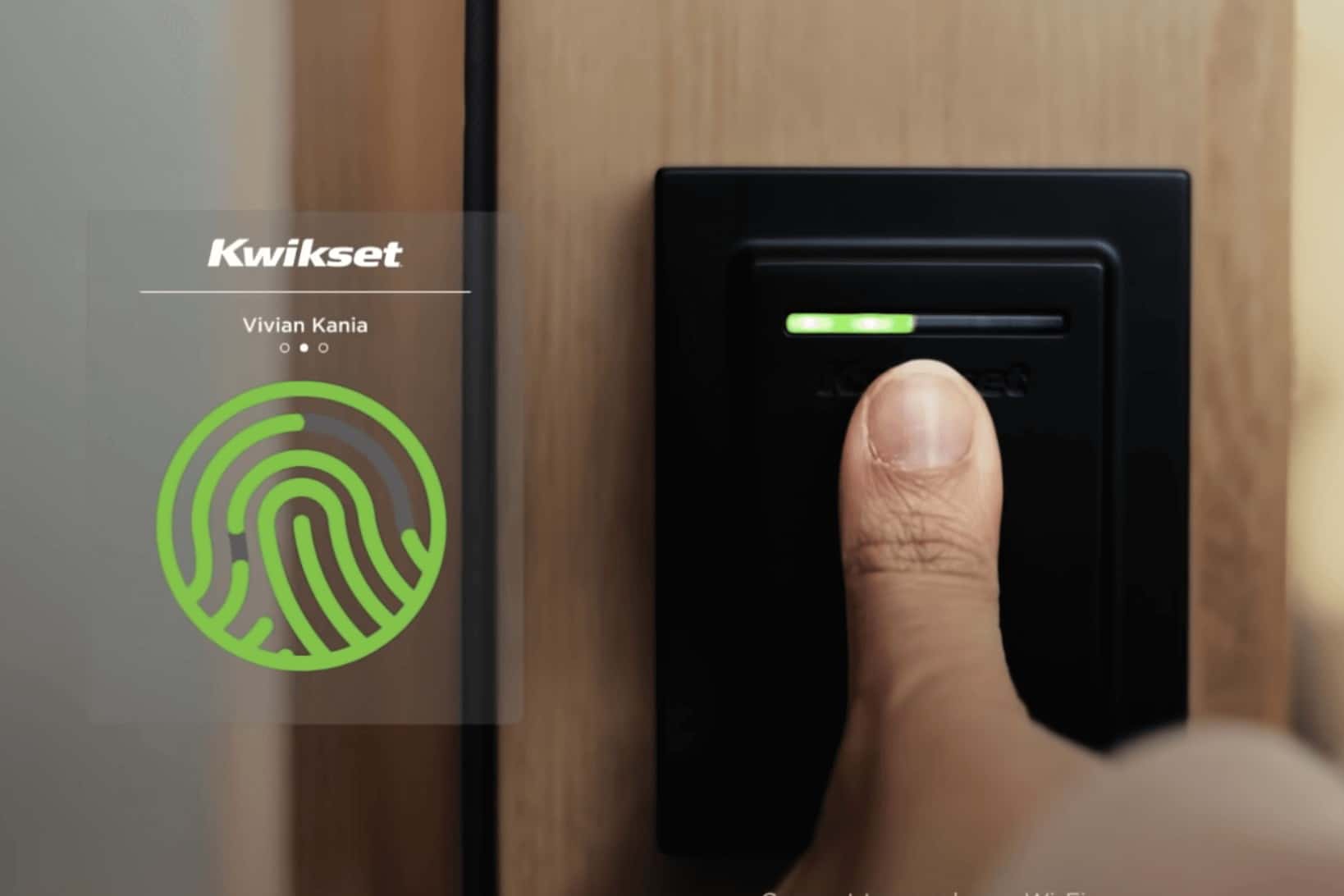
The Kwikset Halo Touch in action.
For a smart lock to catch our eye these days, being tough as nails isn’t enough. It also has to be a cinch to use for the whole family and it has to work with Alexa, Google Assistant, or whatever smart home equipment you have in the house. If it’s good-looking and well-designed, that doesn’t hurt either.
The sleek, brushed-metal Kwikset Halo Touch Smart Lock, which dropped in 2020, makes a strong pitch for being the last lock you’ll ever need. It comes with a monster deadbolt that gets a Triple-A rating from the Builders Hardware Manufacturers Association. It’s also smart home compatible, with built-in Wi-Fi and a biometric fingerprint sensor, so you can unlock your door just like you unlock your phone.
The one thing the Halo Touch doesn’t have? A wildly expensive price tag. At $240, Kwikset’s most innovative smart lock is about par for the course.
Sound too good to be true? Well, no smart lock is perfect — though August’s new Wi-Fi Smart Lock gets pretty darn close. I’ll share my Halo Touch test results in just a second. First, let’s take a look at a few things Kwikset’s fingerprint smart lock gets right.
Did You Know? American inventor and politician Linus Yale Sr. invented the pin tumbler lock in 1894, though there’s evidence that the ancient Egyptians were using some variation of the same lock as early as 4,000 B.C.1

Look, ma, no keypad! The Kwikset Halo Touch unlocks with a fingerprint.
In case you’re wondering, the Halo Touch’s fingerprint sensor works exactly as you see in the gif above. If you’re still not impressed, let me just remind you that the Halo Touch isn’t just convenient — though a lock that opens without keys, keypad, or a nearby smart device is about as good as it gets convenience-wise.
The Halo Touch is a lifesaver precisely because you won’t need anything to unlock your home but your finger, which you’ll always (hopefully) have on you. With most other next-gen locks that feature auto-unlocking via Bluetooth or Wi-Fi, you’re stranded without your phone or smartwatch.
Kwikset’s fingerprint sensor is also better for parents with children and tweens, who often can’t use keypads because they can’t remember PINs. The Halo Touch can store up to 50 sets of prints, by the way, which is plenty. Each user needs two of them on record, so that’s 100 prints in total.
And in terms of security, while someone could, in theory, filch a pin, no one can steal a fingerprint, so you’ve got added peace of mind there.
FYI: The Halo Touch is compatible with Google and Amazon hubs, so voice commands are a go. However, it also works with a handful of smart switches, too, if you prefer a little light when you walk in the door at night. For more tips on outfitting your smart home, check out our complete guide to smart home automations.
| Halo Touchscreen | Halo Touch | |
|---|---|---|
| Price | $200 | $240 |
| Size | 3.99 x 4.24 x 9.74 inches | 4.18 x 5.39 x 9.82 inches |
| Connectivity | Built-in Wi-Fi | Built-in Wi-Fi |
| Hub | Not required | Not required |
| Z-Wave | No | No |
| Keypad | Yes | No |
| Auto-lock | Yes | Yes |
| Yes | Yes | |
| Alexa | Yes | Yes |
| Siri | No | No |
There’s no doubt that Kwikset’s flagship smart locks are sleek and polished. The contemporary model is a beaut. But small, they are not. The interior thumb turn assembly measures almost 10 inches on the Halo Touch. Compare that to the 7-inch Yale Assure SL, which isn’t tiny by any means.
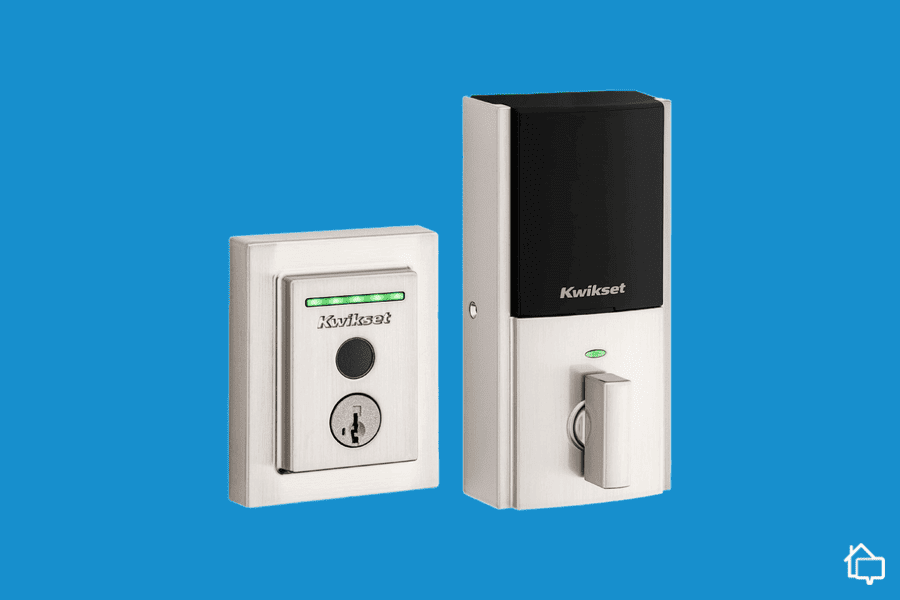
The Halo Touch is good-looking, but a little bulky.
Both the keypad-ready Halo Touchscreen and the Halo Touch ditch hubs and bridges for built-in Wi-Fi. This is going to be standard before long, so that’s a plus. While both smart locks also support Google Assistant and Alexa, for some reason Kwikset has turned its back on Apple smart homes. Is HomeKit the brains behind your smart home? If so, you’ll want to look for another top smart lock.
Now that we’re on the subject of smart lock integration, to my knowledge, the Halo Touch also doesn’t work with ADT equipment or Vivint security systems, either. That’s a shame, because I know that you can pair other Kwikset locks with products from these home security giants. Maybe it’s time to put that feature request in.
Pro Tip: Which is better for your smart lock, Bluetooth or Wi-Fi? Most experts would probably choose Wi-Fi. You can program and control your smart lock remotely if it has Wi-Fi. With Bluetooth, you have to be within 15-20 feet of your door.
Last but never least: the price tag. No smart lock with a fingerprint reader is going to be cheap — at least not for the next few years. If you’re looking to spend a lot less, I’d try the Wyze Lock Bolt. You can’t go wrong for $70. Just remember, the Wyze Lock Bolt is Bluetooth-only, so you won’t have remote access via Wi-Fi. Otherwise, if you’re shopping for a lock in the $200-$300 price range with a deadbolt that thieves will absolutely hate, Schlage locks are still our top burglar busters.
Did You Know? One of the world’s first smart home automations dates back to 1909, when Walter Schlage invented a door lock that could turn his house lights on and off.2
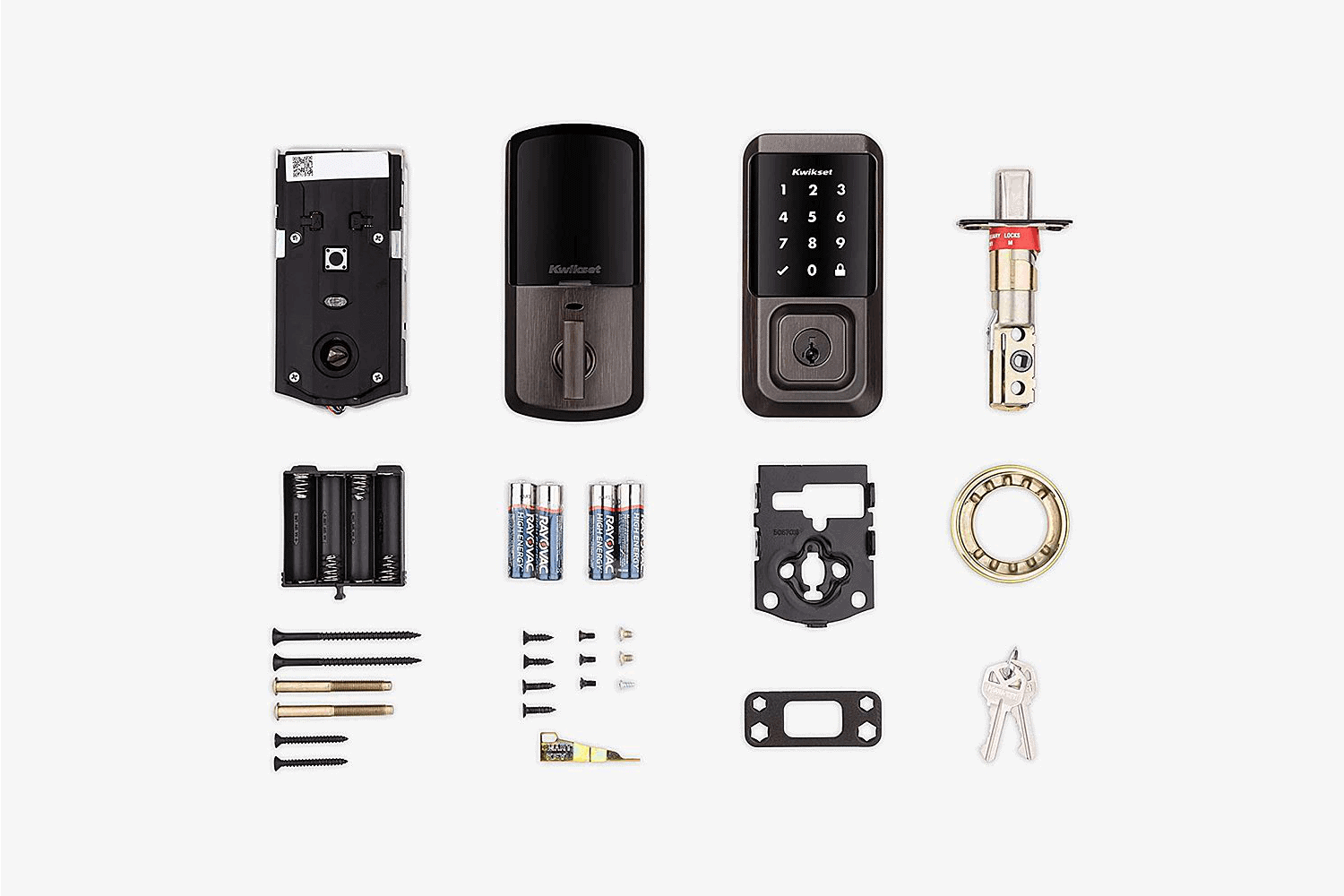
Warning: the Halo Touch may take more than 15 minutes to install.
The folks at Kwikset estimate that the average homeowner can slap the Halo Touch Smart Lock onto their door in 15 minutes. That’s some positive thinking! I’d probably stretch that to 30 minutes to 1 hour for anyone that’s never installed a deadbolt before. The Halo Touch shouldn’t scare you, by any means, but there are plenty of screws and measurements involved.
Otherwise, the Halo Touch is like every other deadbolt-ready smart lock when it comes to installation. Still, I did want to share a few personal tips I picked up while installing my Halo Touch that may save you some time and angst.
FYI: You can also find the complete Halo Touch assembly instructions on the free Built app, which has very useful 3D renderings and animations.
As long as it goes smoothly, a smart lock installation is like a honeymoon where you marvel at the design and frolic around in your new app. Using that smart lock on the day-to-day, however, is the real test of that marriage. How does the Halo Touch fare here? Let’s take a look.
I’m not the kind of guy who complains about having to put down my grocery bags to unlock my door. With the Halo Touch, I had two prints on record, exactly what I have for my phone, and that was enough for me to get in comfortably.
I was curious about what would happen if someone else tried to use their prints on my lock. Would I get an alert? Would the Halo Touch lock itself down after a number of failed attempts? Enter my sticky-fingered 9-year-old daughter, who was more than up to the task of sticking her messy fingers all over the Halo Touch. The upshot? Not one alert and no lockdown.
Folks, if I can set up my SimpliCam security camera to alert me every time the curtains rustle in my office, I should be able to know when a potential burglar tries to Mission Impossible their way into my home. (Speaking of which, here are a few DIY tips for keeping prowlers off your property over the summer holidays.)
Did You Know? One in three burglars break into houses through the front door.3 For our full report on residential burglary in the U.S., check out these updated burglary statistics.
Being able to add guest users — like, say, the catsitter — is a major smart lock selling point. My Wi-Fi-enabled Halo Touch had room for 50 extra users. I could even limit access to specific days and times.
Unfortunately, when it came time to actually set up guest access, it was a bit of a hassle because the guest needed to be standing there, in person, at my door. Which makes sense. How else could the Halo Touch read their fingerprints? Still, this is one situation where I felt that an old-fashioned PIN would’ve been a lot more convenient.
Did You Know? Key bumping is a technique thieves use to open locks in seconds. They buy a skeleton key that fits the lock they want to pick, stick it inside the lock, tap it with a screwdriver or hammer while twisting the key, and bam, they’re inside your home. According to Kwikset, the Halo Touch is one of a handful of smart locks built to repel key bumpers.
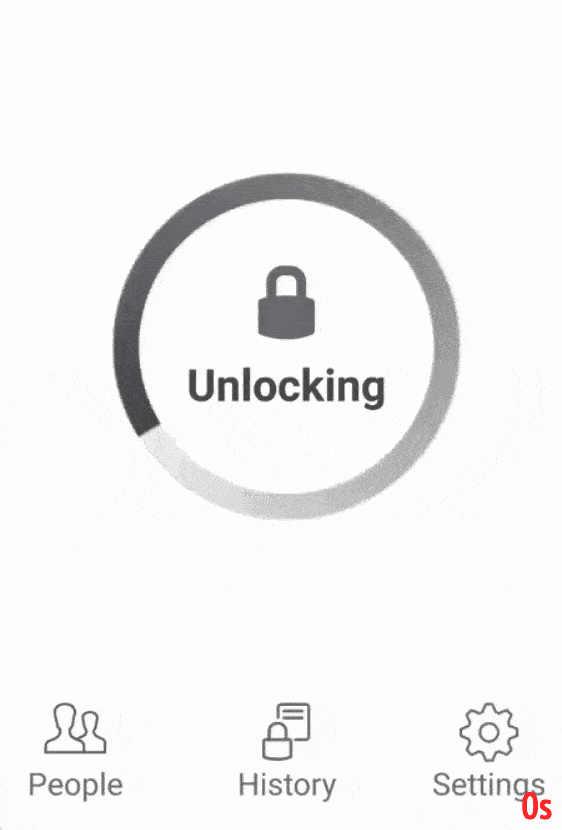
Kwikset’s app is a snap to use, but a little laggy.
Kwikset’s app scores points for simplicity. It was easy to use and it wasn’t packed to the gills with features I didn’t need. However, I do have two gripes. One is significant. The other may just be me. Let’s start with my petty gripe:
The Kwikset app is pretty laggy. Is that the end of the world? No. But having to wait seven whole seconds for my app to catch up with my hardware eight times a day seemed like an unnecessary nuisance.
My second gripe is a problem common to all smart lock deadbolts without door sensors. While the Kwikset app showed my door’s lock status, it didn’t know if my door was actually shut or not. In other words, my door could’ve been locked and open at the same time. Coupled with Kwikset’s auto-locking feature, this could’ve been a recipe for disaster. More on this below.
FYI: If you ever need to connect your Halo Touch to a new Wi-Fi network, you’re in for a bit of a hassle. To reset that Wi-Fi connection, you’ll also need to factory reset your lock, which means adding users all over again.
Kwikset gave me two ways to lock my door. The first, which I recommend, was simply pressing the sensor with my finger. This worked every time. The second was toggling on auto-lock via the Kwikset app, which was potentially disastrous. Why?
Imagine it’s 7 a.m. and you’re rushing out the front door. You forget your phone and run back inside. If you’ve enabled auto-locking, your deadbolt has already gone into lock mode. Twenty seconds later you whip back out the door, pulling it shut behind you. Your locked deadbolt smacks right into the door frame.
This is just bad product design. As I mentioned above, without a sensor that can tell your lock that the door is still open, auto-locking is a liability, not a perk.
Pro Tip: How secure is your deadbolt? Maybe not as secure as you think. In 2007, a team of security experts at the DEF CON hacker conference bumped a handful of the toughest locks on the planet in minutes, including locks used in the White House and the Pentagon.4
An attractive, Wi-Fi-ready smart lock that I can open with my finger? I’m in. But a smart lock that might destroy my door frame when I enable the auto-locking feature? I might wait until the manufacturers pair their cutting-edge biometric fingerprint sensor with a basic door sensor that knows when my door is shut. Though not a standard feature yet, there are at least two top smart locks in the same price range that do know when your door is shut: the new August Wi-Fi Smart Lock and the Yale Assure.
Those are my feelings on Kwikset’s bold and beautiful Halo Touch in a nutshell. A marvel of invention that’s generally easy to use and isn’t bad value for money — but a lock which lacks a few very useful features that would push it securely into the A range.
Fingerprint ID’ing, coupled with an AAA-rated, “bump-proof” deadbolt, makes the Halo Touch safe enough to protect most of our doors.
No, you can unlock your door via your app or with your finger, but the Halo Touch won’t automatically unlock itself when you’ve reached your driveway. Check out the August Wi-Fi Smart Lock if you’re looking for geofencing.
At $240, the Halo Touch isn’t cheap, but it’s squarely in the ballpark for an advanced, Wi-Fi-ready smart lock.
Yes, it comes with a sturdy deadbolt and strike plate with 3-inch screws.
Yes, if you need to change keys for any reason, you won’t need a locksmith. The Halo Touch comes with a rekey tool that lets you prepare your lock for a new key very easily.
Yes, it does. However, because the Halo Touch lacks a door sensor, with auto-locking enabled, your deadbolt can easily lock itself while your door is still open.
Lemelson-MIT. Linus Yale.
https://lemelson.mit.edu/resources/linus-yale
Schlage. (2023). Company History.
https://www.schlage.com/en/home/about-us/company-history.html
ADT. How Do Burglars Break into Houses?
https://www.adt.com/resources/how-do-burglars-break-into-houses
Wired. (2007, Aug 5). White House High-Security Locks Broken: Bumped and Picked at DefCon.
https://www.wired.com/2007/08/jennalynn-a-12/